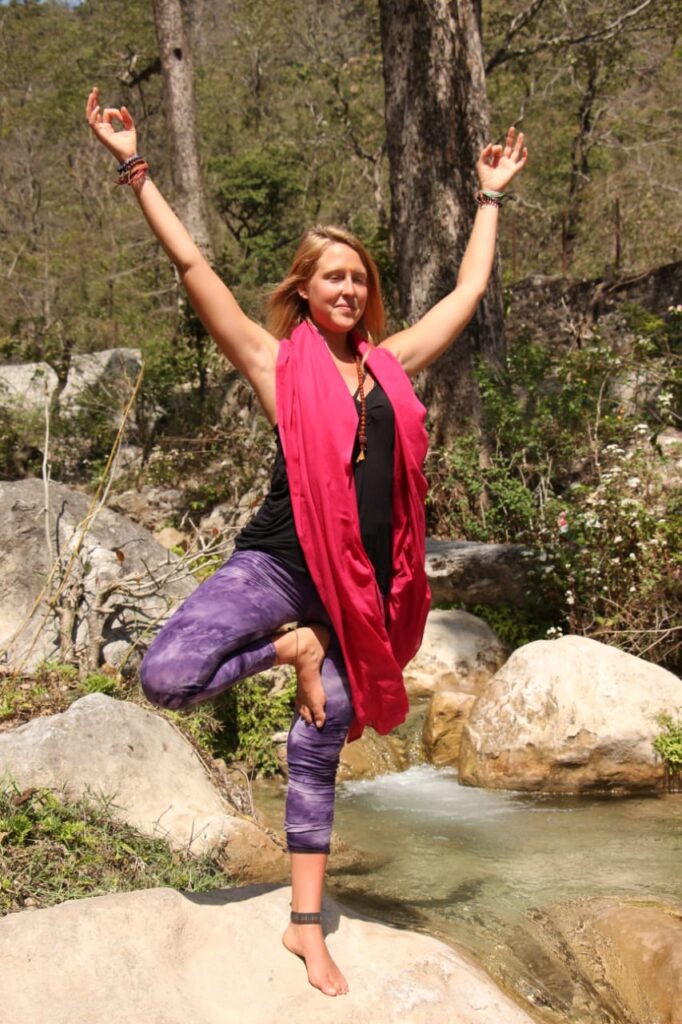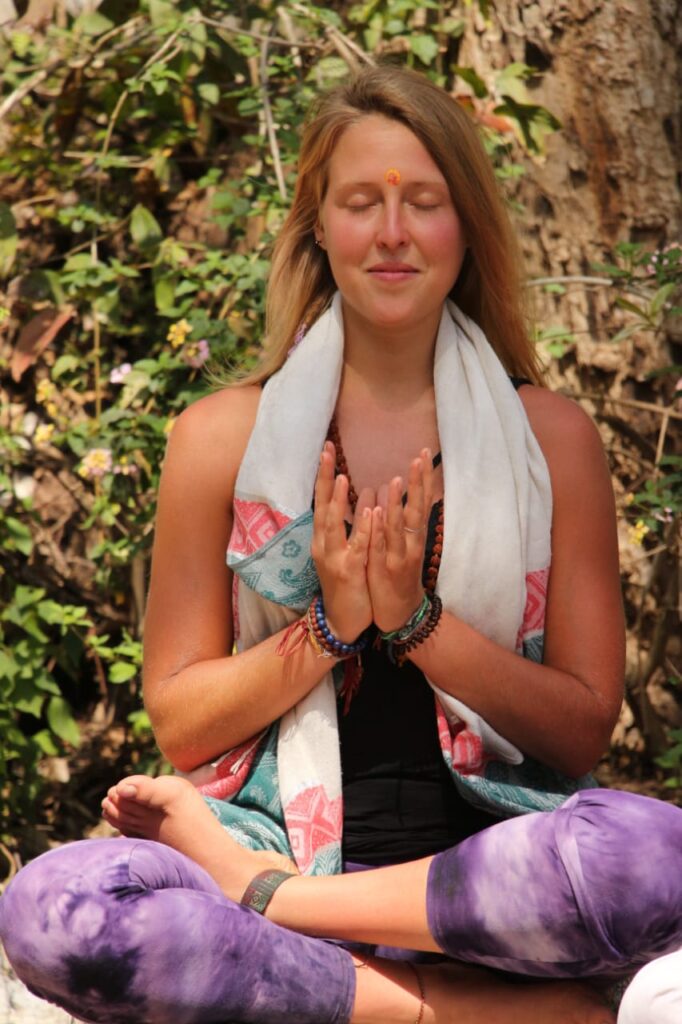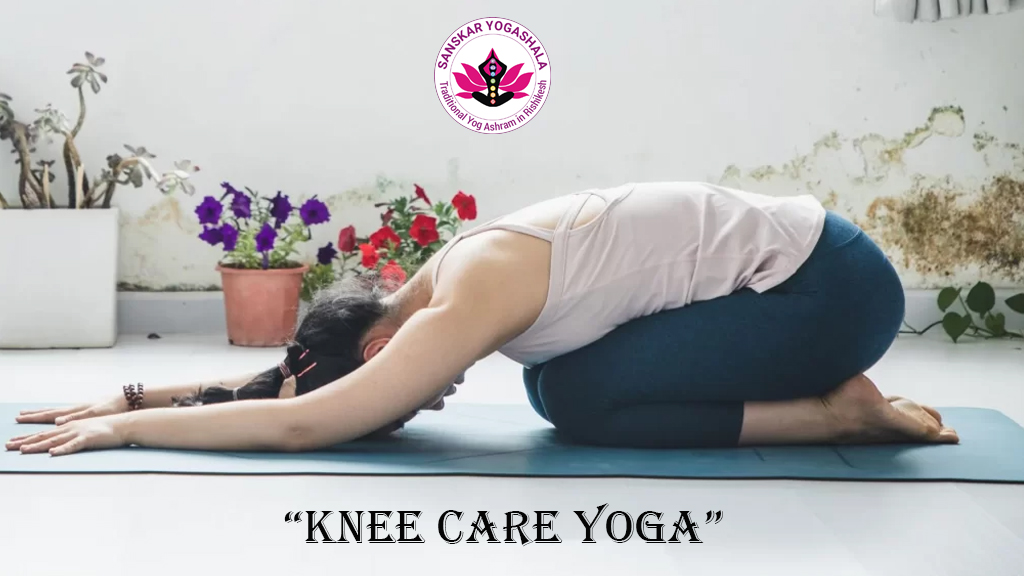Knee Care Yoga Do you often hear that the elderly, middle-aged people and even young people have knee problems? They will say: “Knee soreness, knee pain, knee soreness, knee soreness, knee weakness, knee sound, knee degeneration, knee hydration, degenerative arthritis…etc.”
Basic actions such as walking, running, jumping rope, and squats all use the knees. The knees are one of the most important joints for movement.
There is a saying that “people age first, their legs”. If you want to live a health and long life, protecting your legs is the first step. When you have problems with your knees, you naturally don’t want to move, which will accelerate the decline of your legs. It can be imagined that knee maintenance is very important. It’s important!
Next, we will take you to understand the structure of the knee, why the knee hurts , what to do about knee pain, where to go for knee pain, how to relieve knee pain, how to maintain the knee… and other information, and invite you to practice “Knee Care Yoga” for prevention. Knee degeneration, have strong knees!
knee structure
1. Main bones of the knee
The lower leg is connected to the thicker inner calf bone.
It is connected to the fibula, the thinner outer leg bone.
In front is the kneecap, the patella.
The tibiofemoral joint is the joint between the femur and tibia, which mainly allows movement of the thigh and calf.
The patellofemoral joint is the joint between the femur and patellofemoral bone, which allows the leg to move more easily through the lever principle.
There is a meniscus (full name : meniscus cartilage plate ) in the tibial joint, which can increase the contact area to disperse pressure and buffer force. It is an important shock absorber of the knee joint.
2. Connect the main ligaments and muscle keys
Ligaments of the knee joint connect bones to bones; tendons connect bones to muscles.
The anterior cruciate ligament and posterior cruciate ligament of the Knee Care Yoga are responsible for the stability of the knee joint.
The medial collateral ligament and lateral collateral ligament of the knee prevent the knee from folding outward or inward.
The patellar tendon spans and covers the knee , allowing the knee to run and jump powerfully.
3. Main muscles connecting the knee joint
Quadriceps on the front of the thigh
Popliteus muscle on the back of the thigh
Tibialis anterior muscle on the front of the calf
Gastrocnemius muscle on the back of the calf
The main task of the knee (knee joint) is to be responsible for stability, and the hip (hip joint) is the main part of the active force. If the muscles near the hip are well trained, such as the buttocks, the back of the thigh, and the outside of the thigh, many lower limb problems can be solved.
Why do knees hurt?
1. Caused by living habits
(1) Weak thigh muscles
If you do not have enough daily activities or exercise, or do not exercise enough muscles, your thigh muscles will be weak and it will be difficult for the muscles to support the body weight, which will increase the load on the knees and easily lead to Knee Care Yoga soreness in the long run.
(2 )Excessive exercise
Intense exercise will cause muscle fatigue. Without proper rest, the muscles will not have enough strength to support the knees, which will increase the load on the knees, causing knee pain and even wearing down the articular cartilage.
(3) Exceeding the usual amount of exercise
Sudden exercise that exceeds normal exercise habits will cause stiffness and tightness of the hip and leg muscles, causing an imbalance in the muscles supporting the knees, increasing the load on the knee joints, and causing knee pain.
(4) Wear shoes that don’t fit your feet
Ill-fitting shoes or high-heeled shoes will cause the body to walk in a bad posture, and the body’s efforts to control balance and prevent falling will put more pressure on the knees and affect knee pain
(5) Walking on slippery surfaces When
walking on slippery surfaces, the body will automatically take violent actions to try to balance the body and maintain stability in order to prevent falling, which puts excessive burden on the Knee Care Yoga and causes injuries, such as on slippery surfaces.
(6) Too fat
Generally speaking, the knees have to bear three times the weight of the body when walking. If you are too obese, your knees will easily become inflamed and painful for a long time.
2. Caused by disease
Common knee pain conditions include the following:
(1) Patellar tendonitis: pain on the front and lower side of the knee (below the patella)
symptom:
If you straighten your knees and press the lower edge of your Knee Care Yoga cap with your fingers, you will feel pain.
Frequently squatting and unable to stand up

(2) Quadriceps tendonitis: pain above the front of the knee (above the patella)
The quadriceps muscle is a muscle located on the front of the thigh. It is collectively called the rectus femoris, vastus lateralis, vastus medialis and vastus intermedius. When the muscle contracts, it straightens the Knee Care Yoga joint and straightens the leg. .
symptom:
You may feel pain or stiffness during or after exercise
Symptoms can be induced by forcibly contracting the quadriceps muscles with the Knee Care Yoga joint extended.
Swelling or pain when touching the upper edge of the patella
Maintaining a squatting position may cause pain
(3) Myofascial pain syndrome: pain on the front or lower side of the knee
The Knee Care Yoga joint is connected to the thigh muscles through tendons. Once the muscles are improperly used, stretched or injured, the range of motion of the knee will be affected and pain will occur.
symptom:
Painful tightness on the front or lower side of the knee
The range of motion of the knee joint is limited. You will feel stiff when bending or straightening the knee such as squatting or standing up.
(4) Popliteal pain syndrome: posterior knee pain
The popliteal fossa is a diamond-shaped depression in the area behind the knee.
Symptom:
Pain often occurs at the starting point or attachment point of the posterior thigh muscles, and is usually accompanied by symptoms such as obvious redness, swelling, and heat.
The starting point of the hamstring muscles is at the ischial tuberosity, so tight hamstring muscles can cause discomfort in the buttocks
( 5) Knee synovitis: medial knee pain (medial patellofemoral condyle)
The synovium is a layer of connective tissue that covers the lining of the joint capsule, a cavity (the joint cavity) inside the Knee Care Yoga. If this cavity is compared to a room, the synovial membrane is equivalent to the wallpaper in the room. Because the synovial cells secrete synovial fluid, they can keep the joint cartilage surface smooth, thereby increasing the range of motion of the joint.
symptom:
Symptoms of swelling, pain and fluid accumulation appear , and the fibers become hard and lose elasticity.
Reduced range of motion, inability to fully straighten, bend, and squat the knee
Occasionally there is a friction sound
(6) Ancillary tendonitis: Pain on the inside of the knee (above the tibia)
The ancillary tendon is located on the inside of the Knee Care Yoga joint and above the tibia. Its main function is to prevent the lower limbs from rotating outward when walking and running.
Symptoms: You will feel pain when you press the inside of the knee joint and the top of the tibia with your fingers.
Improper stretching
(7) Iliotibial band syndrome (ITBS): pain on the outside of the knee
The iliotibial band is a ligament that connects the lateral epicondyle of the femur (thigh) and the tibia (calf). It is long and thick. It is pulled forward and backward as the Yoga bends and straightens.
The iliotibial band is also an extension of the gluteus maximus and tensor fasciae latae.
symptom:
When the knee Care Yoga joint is bent and straightened, there will be friction or swelling on the outside and upper part of the knee.
Especially when the knee is bent at 30 degrees and under load-bearing conditions, the outside of the knee will rub, causing a stuck feeling, causing pain, especially when going up stairs or running.
Long-term running, cycling, mountain climbing, etc. will cause the iliotibial band located on the outside of the Knee Care Yoga to be constantly exposed to friction, and over time it will become swollen and uncomfortable.
Often when running on uneven roads or downhill, as well as having foot length problems, the iliotibial band is busy stabilizing the pelvic movement, increasing pressure and causing pain and swelling.
High-risk groups include women, long-distance runners, cyclists, and people with knee valgus (XO-shaped legs) and weak hip abductors.
(8) Gout: Pain in the big toe, ankle and knee joints
Symptoms:
Redness, swelling, heat, and pain usually occur in the big toe, ankle, and knee joints.
When the amount of crystals increases, they will easily fall into the joint cavity. Immune cells will think that the falling crystals are foreign objects and launch an attack, causing joint inflammation and pain.

What to do if you have knee pain
Once knee pain occurs , you should rest first and stop all movements and sports that cause knee pain to prevent the symptoms from worsening.
When there are any abnormal symptoms in the knee, since the symptoms of knee pain are similar, we cannot clearly know the root cause of the Knee Care Yoga pain. It is necessary to be diagnosed by a professional doctor. Delay in seeking medical treatment will worsen the condition.
Which department should I see for knee pain?
You can register at an orthopedics or rehabilitation department, and the doctor will treat or make a referral based on your symptoms.
How to relieve knee pain
If you have any abnormal symptoms of knee pain, you need to seek diagnosis and treatment from a doctor. For less severe knee pain, you can relieve it by the following methods:
1. Rest appropriately, but not too long
If you have knee pain, you should rest first to let the Knee Care Yoga get better. However, resting for too long will weaken the muscle strength and put more pressure on the knee, which will make the knee pain more serious.
2. Raise your knees
Elevate your knees to avoid swelling, and place pillows under or between your knees to keep them elevated while you sleep.
3. Apply ice and heat when appropriate
Ice compress: If the Knee Care Yoga is red, swollen, hot, or painful in the acute stage of inflammatory reaction, apply ice compress. You can use an ice pack or a plastic bag filled with ice cubes and wrapped in a towel.
Hot compress: For soreness in the subacute and chronic stages, hot compress can be used to promote tissue healing and circulation and reduce swelling and bruises. You can use a non-scalding hot towel or an electric blanket.
No professional can judge whether to apply ice or heat, but it is recommended that ice application within 12 hours is relatively safer.
Each round lasts about 10-15 minutes, and ice or heat can be applied 1-3 times a day depending on the injury. For acute and severe injuries, apply ice for 10-15 minutes every hour.
4. Ginger relieves pain
Studies have found that ginger can relieve pain, in addition to relieving upset stomach and nausea.
5. Choose moderate exercise
Knee Care Yoga patients are suitable for stretching, muscle-strengthening training, pain-relieving exercises and low -impact exercises that can awaken muscle strength, make them more elastic, and allow greater range of motion, such as walking, swimming or yoga. However, running is not recommended because it will cause The knees are under greater pressure.
When your knees feel Uncomfortable, you may experience slight pain or discomfort during exercise. This is normal. Don’t give up on practicing. If you feel the pain and it gradually gets worse, stop immediately and consult a doctor. It is important to listen to your body .
6. Pick the right shoes
Choose shoes that are protective and comfortable. Good shoes have a cushioning effect and can protect you from injuries during daily activities or sports.
7. Weight control
For every 1 kilogram added, the pressure on the Knee Care Yoga will increase by 4 kilograms. For overweight patients, losing weight can reduce the pressure on the knees and have a significant impact.

How to take care of your knees
1. Wear suitable shoes
Choose shoes of good quality, suitable for your foot shape, and with adequate cushioning. For example, people with flat feet should use special insoles to provide support.
2. Walk on flat and safe ground
When jogging, choose an area with a flat, soft surface, such as a playground track. Don’t jog when going downhill, walk instead.
3. Control your weight
People who are overweight should lose weight.
4. Good exercise habits
Hip and leg endurance and extensibility training strengthens muscle strength. As long as the muscles are strong enough, they will have enough strength to support the knees. They can also exert a buffering effect on instantaneous force changes to avoid direct damage to the knees.
Exercise notes:
Warm up before exercise and stretch to relax after exercise
Don’t exercise too strenuously
Exercise gradually and do not suddenly exceed your usual amount of exercise
It is recommended that professional coaches and teachers guide the correct practice methods to avoid various wrong compensatory movements. Compensatory movements are often the root cause of chronic joint damage.
Knee Care Yoga
Modern people sit for long periods of time causing:
Shortening of the quadriceps on the front of the thigh and the iliopsoas on both sides of the pelvis
Weakness of the popliteus muscles on the back of the thighs and the gluteus maximus and gluteus medius muscles of the buttocks
This leads to muscle tightening and insufficient muscle strength, which makes it difficult for the muscles to support the body weight and increases the load on the Knee Care Yoga. The knees begin to produce friction, discomfort, weakness in walking, and even pain.
This time, it targets the most important leg and hip muscle groups for walking, training muscle strength, muscle endurance and flexibility:
Make the buttocks and leg muscles soft and elastic, and improve muscle strength
Relax knee joint pressure and increase range of motion
Relieve knee pain and prevent knee degeneration
in conclusion
The knee is a very important joint in the human body. It is used in most daily activities. As long as knee joint problems occur, it will cause great inconvenience, make people uncomfortable, and affect the quality of life.
There is a saying that people age first in their legs. Pain in the knees will make people less willing to move, which will accelerate the degeneration of the joints over time, creating a vicious cycle.
We need to have strong knees. In addition to having good living habits, the most effective way to maintain our knees is to exercise!
Through “Knee Care Yoga“, you can stretch tight muscles and exercise weak muscles to make the muscles elastic and strong, reduce knee pressure, and say goodbye to knee problems.
Book Your Spot




